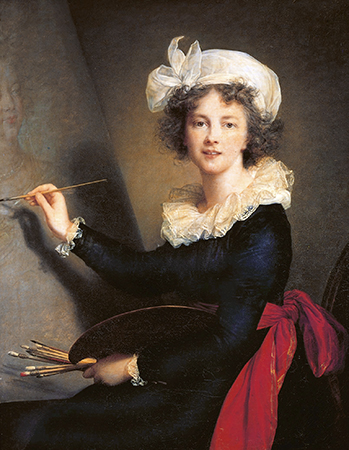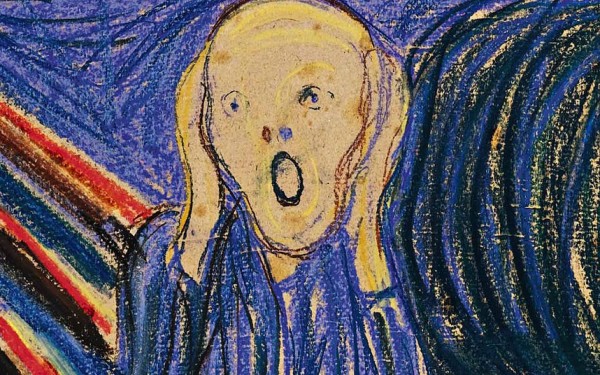
13 Apr TIO NYC: Portraits X 3
Major talent – and legend in her own times.
But a relatively minor brand today – despite her unique talent and rolling legacy.
And yet…

A photo of cabaret performer Mabel Mercer, from the archives of The Mabel Mercer Foundation.
Cole Porter adored the woman. It was just one of those things….
So did Marlena Dietrich (who paid her passage to America to escape the Nazis).
She kept company with the Duke and Duchess of Windsor and other blue bloods, who, like Porter and Dietrich, were regulars at her club.
After a move to America, Sinatra came to worship at her feet, learn what he could learn about style.
Tony Bennett, Lena Horne, and Billie Holiday were in her fan club too.
Mabel Mercer (1900-1984) was the bi-racial cabaret diva, who was never mothered her mother, never had a child of her own, yet managed to birth the the timeless ballad style of singing that emphasizes dramatic pacing and packs every note, every impeccably articulated word, with unapologetic emotion. (See above, Sinatra, Bennett, etc.)
Trezana Beverley’s MABEL MADNESS at Urban Stages, courtesy www.broadwayworld.com
To set the record straight and truth be told, mine the riches of Mercer’s rags-to-riches story, the stuff of bodice rippers and daytime soaps, the multi-talented Trazana Berkeley (actor, director, singer, acting teacher, and writer) penned “Mabel Madness: The Life of Mabel Mercer” (with help from the insightful literary director of Urban Stages, Antoinette Mullins).
Trazana also starred as the iconic “story-songstress,” giving a bravura performance under the sentient direction of part-time Tellurider Frances Hill (Barlow), owner/director Urban Stages, and Peter Napolitano; unerring musical direction, Tuffs Zimbabwe.
On closing night, we joined the rapt crowd gathered in Mercer’s one-room digs – the warm, welcoming, well-appointed setting courtesy of video designer Nicholas Blade Gilder – and fell for Mercer/Trazanza like ninepins.
The hope is that the intelligent, uplifting show gets to grow longer legs somewhere off-Broadway.
Elisabeth Louise Vigée Le Brun at the Met:

Elisabeth Louise Vigée Le Brun, Self-Portrait, 1790, oil on canvas,
Like Mercer, Elisabeth Louise Vigée Le Brun was a superstar back when and another precocious, yuge talent who managed to buck the odds – the world of painting was a boy’s club, then came the French Revolution – painting with a freedom, immediacy and striking sincerity that mesmerizes.
According the the Metropolitan Museum of Art, where the must-see, long overdue tribute is mounted (through May 15):
Elisabeth Louise Vigée Le Brun (French, 1755–1842) is one of the finest 18th-century French painters and among the most important of all women artists. An autodidact with exceptional skills as a portraitist, she achieved success in France and Europe during one of the most eventful, turbulent periods in European history.
In 1776, she married the leading art dealer in Paris; his profession at first kept her from being accepted into the prestigious Académie Royale de Peinture et de Sculpture. Nevertheless, through the intervention of Marie Antoinette, she was admitted at the age of 28 in 1783, becoming one of only four women members. Obliged to flee France in 1789 because of her association with the queen, she traveled to Italy, where in 1790 she was elected to membership in the Accademia di San Luca, Rome. Independently, she worked in Florence, Naples, Vienna, St. Petersburg, and Berlin before returning to France, taking sittings from, among others, members of the royal families of Naples, Russia, and Prussia. While in exile, she exhibited at the Paris Salons.
She was remarkable not only for her technical gifts but for her understanding of and sympathy with her sitters. This is the first retrospective and only the second exhibition devoted to Vigée Le Brun in modern times. The 80 works on view include paintings and a few pastels from European and American public and private collections.
Roberta Smith of The New York Times weighs in with lavish praise for Marie Antoinette’s favorite portraitist:

Marie Antoinette With a Rose” (1783) is part of the exhibition “Vigée Le Brun: Woman Artist in Revolutionary France” at the Metropolitan Museum of Art, courtesy, The New York Times.
Official portraiture took a hit last week, at least in the United States. Congress just renewed its 2014 prohibition on spending public money on the portraits of politicians that by long tradition have graced the walls of the United States Capitol. Members of Congress and the executive branch must continue to pay for the images by which they want to be remembered.
Things were very different when monarchies ruled Europe. Painted portraits were serious affairs — whether of state, commerce, historical record or private life, and whether for royalty, aristocrats and their hangers-on, or the bourgeoisie, who usually could afford only pastel.
The career of the French portraitist Elisabeth Louise Vigée Le Brun (1755-1842), the subject of a ravishing, overdue survey at the Metropolitan Museum of Art, unfolded in those earlier times, almost entirely in the courts of Europe…
Edvard Munch at Neue Galeries. The show is a Scream:

Munch, The Artist & His Model, 1921.
Existential angst (and surprise, the early days of abstract art in two canvases from artist’s later years) are on display at a gem of a show at the Neue Galerie that pays homage to Norwegian artist Edvard Munch, the father of Expressionism (through June 13). The show includes, but also goes way beyond the artist’s iconic image, “The Scream’ (featured in multiple incarnations in a room of its own).
About the show and Munch (from Neue):
An exhibition that examines Edvard Munch’s influence on his German and Austrian contemporaries, as well as their influence upon him. The show will offer a compelling new look at works by the Norwegian artist, whose painting The Scream has become a symbol of modern angst. The Neue Galerie is the sole venue for the exhibition, where it will be on view through June 13, 2016. This exhibition has been organized in partnership with The Munch Museum, Oslo…
Edvard Munch (1863-1944) was highly regarded for his exploration of dark themes, including alienation, sin, and human vulnerability. Munch’s use of vivid color intensifies the emotional power of his subject matter, an approach which helped to pave the way for an entirely new attitude towards art during the early twentieth century. Although much has been written about the relationship between Munch’s personal life and his art, this exhibition is the first thorough study of the artist’s work in the context of his German and Austrian peers.
The exhibition is comprised of approximately 35 paintings and 50 works on paper from both public and private collections worldwide. The German artists included in the exhibition are Max Beckmann, Erich Heckel, Ernst Ludwig Kirchner, Gabriele Münter, and Emile Nolde, and the Austrians included are Richard Gerstl, Oskar Kokoschka, and Egon Schiele. The curator compares all of these artists’ approaches to key themes such as adolescence, urban anxiety, and self-portraiture, and to innovative developments in printmaking during this time. The exhibitionncludes several works that have never before been seen in the United States…
A rave review by Holland Cotter from the New York Times:
Visit Oslo in midwinter and high summer and you’ll know the atmospheric sources of Edvard Munch’s art: barely broken darkness, and sunlight you can’t escape. Both are evoked in “Munch and Expressionism” at the Neue Galerie, where paintings and prints by Munch and his younger German contemporaries glow and flare like lamps against midnight-blue walls.
There’s no question that Munch was a product of his Norwegian homeland. But the show makes him part of a larger history, too. It argues that his art significantly shaped, and was shaped by, European culture of the early 20th century, when an atmospheric clash of liberationist yearning and doomsday fear charged the air like lightning and sparked reality-fracturing art styles, including German Expressionism.
It was in Germany, where he lived from 1892 to 1908, that Munch developed an international career, though by the time he arrived, his art and thinking had essentially been formed…
A coda to the beginning of our story.
Mercer’s legacy was on display at two engaging cabaret shows we saw earlier in the week: Gabrielle Stravelli at Birdland and Marissa Mulder and Bill Zeffiro at La Rivista.
(And in the small world department, Zeffiro is a friend of Frances Hill and has performed at Urban Stages. Mulder is scheduled to return to Telluride this summer, thanks to Michael Estwanik of the Telluride American Songbook Festival. So is Marilyn Maye, who was in the audience at Stravelli’s show.)

American jazz singer Gabrielle Stravelli.

Cabaret singer Marissa Mulder will perform Fragments of Marilyn, a unique tribute blending music from past and present with Marilyn’s own words.
“Listening to the jazz singer Gabrielle Stravelli is like imbibing a potent cocktail whose flavor changes as you drain the glass. In the first couple of sips, the predominant taste is the sparkling wine that has drifted to the top, for Ms. Stravelli’s bright, rippling voice exudes a natural effervescence. Before long, it darkens, and the heady liquor underneath kicks in…As she dipped and swooped, twirling notes and phrases with a confidence and playfulness that recalled Ella Fitzgerald in her prime, Ms. Stravelli began interpreting lyrics with a ferocity that her vocal pyrotechnics accentuated…”
More on both singers in Clint Viebrock’s review of those shows and more.



Sorry, the comment form is closed at this time.